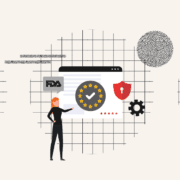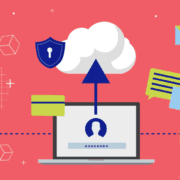A Beginner’s Guide to Sustainable Packaging
Date: November, 2023 | Category: Quality | Author: Hana Trokic
While “going green” may be a proud point for many businesses in this day and age, in the world of packaging and design, it’s not necessarily going far enough. Instead, it’s all about being sustainable.
However, true sustainability doesn’t just take into account the materials that go into packaging. True sustainability also considers potential waste during the production process. When introducing end-to-end sustainability, businesses need to look back to the very beginning, to the point where the packaging is designed and then approved.
It is important to note that the packaging approval process can result in many rounds of revisions until everything is ready for production. The result can create wasted resources if your process isn’t as tight as possible, even if the packaging itself is 100% sustainable.
As a result, significant resources get wasted when mistakes slip through your supply-chain cracks. Avoidable errors can result in recalls leading to heaps of wasted packaging that have no value. For perspective, in 2015 alone, 77.9 million tons of municipal solid waste generated in the United States consisted of containers and packaging. Over one-third of that total ended up in landfills.
Read on to discover how to create truly sustainable packaging and processes for your business.
What Is Sustainable Packaging?
While a product that’s labeled as “green” carries a positive, eco-friendly connotation, it’s vague by standards set by the Federal Trade Commission.
For example, “green” generally means one or some combination of the following:
- Compostable
- Degradable
- Non-toxic
- Ozone-safe/ friendly
- Recyclable
- Made from recycled content
- Made with renewable energy
- Made with renewable materials
- Refillable
“Green” may sound satisfactory, but each of the above actually conveys something tangible. According to Diana Fryc, Director of Operation of Retail Voodoo, using compostable packaging is just one step.
“Aside from compostable packaging, there is still a strong desire to reduce the size of packages, continued desire to use fewer adhesives, and continued use of the post-consumer recycled material,” she says. “Lighter materials to save on shipping costs and form factors that maximize shelf space bottles will also continue.”
In fact, packaging that’s “sustainable” is understood to meet a long list of specific criteria, featuring many of those same characteristics. To further illustrate this point, the Sustainable Packaging Coalition has developed its own criteria for what defines sustainable packaging:
- Sourced from materials that each remain healthy throughout the lifecycle
- Manufactured using clean technologies and best practices, to optimize materials and energy, thereby meeting/exceeding competitive performance and cost standards
- Transported efficiently via fossil fuel alternatives, helping to develop renewable energy markets
- Recycled, recovered, and utilized in closed biological/ industrial loop cycles
Of course, the International Organization for Standardization (ISO), the Consumer Goods Forum, and CEN all have alternative packaging standards. So, globally speaking, there aren’t any hard, fast rules for what constitutes sustainable packaging. There are, however, certain guidelines.
Following them is far from easy, but this guide will help you understand the basics as you maneuver through the complex world of sustainable packaging and its implementation.
Reducing Your Carbon Footprint
Ultimately, by introducing sustainable packaging into your supply chain, businesses are aiming to reduce their carbon footprint as a whole. This includes securing product packaging workflow through effective quality control.
Preventing recalls by catching errors means less packaging, less waste, and therefore, a lot less energy consumed. After all, the resources needed to carry out recalls, which cost on average $10 million in the food industry, don’t include the transportation and labor costs of putting more packaging through your supply chain and re-shipping the product. It all affects your bottom line and the packaging footprint you’re trying to market as sustainable.
Therefore, it’s time to start looking beyond the product and at the complete end-to-end process. Many companies are integrating new technologies and automated systems that can spot errors before going to print as a pre-emptive strike against recalls. The main goal is to address sustainability, as it’s important to consider how products are made and how to be as efficient as possible with the resources available.
It turns out the idea that integrating sustainable packaging leads to higher costs is actually a myth. Studies show that companies that look to become more eco-friendly overall enjoy as much as an 18% return on investment increase. That’s potentially a lot of green for going green.
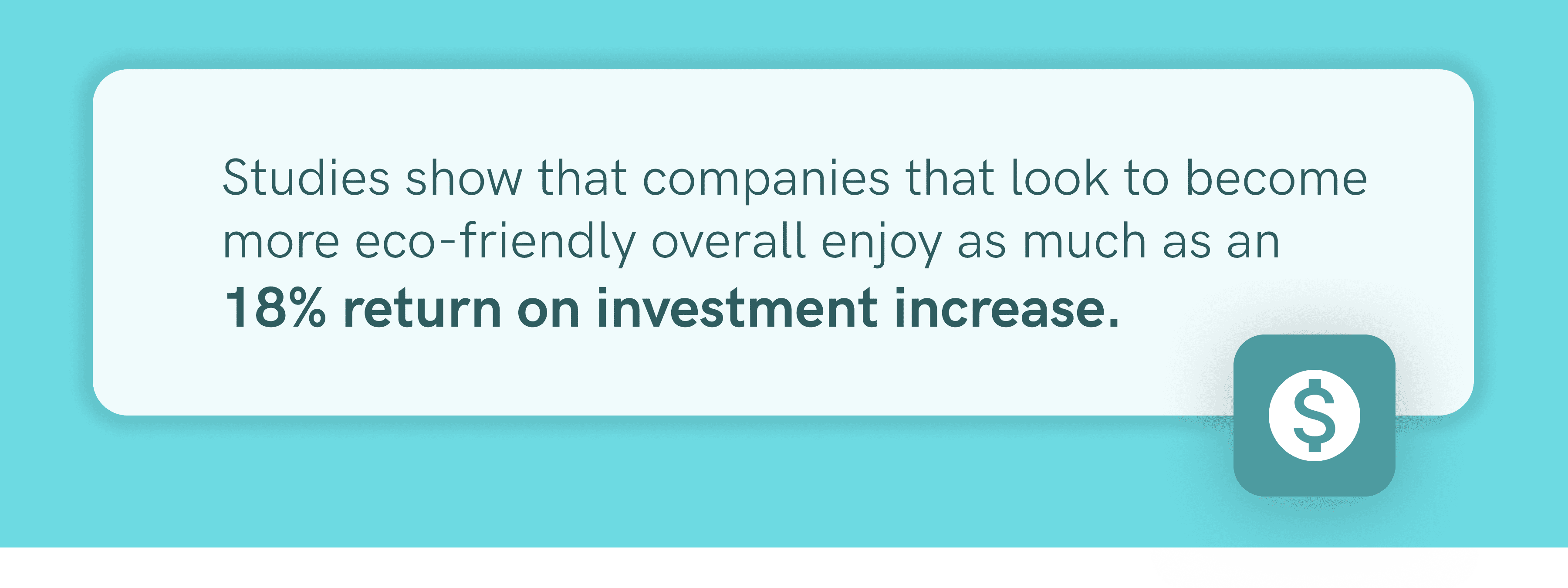
Have you heard about footprint packaging? Learn more by reading our detailed blog post.
The Need for Sustainable Packaging
There’s little denying the benefits of sustainable packaging. There are financial benefits in store for any corporation moving in that direction. That’s not just due to the increased back-end efficiency and economies of scale that result from such a move.
If marketed correctly, sustainably packaged products have been proven likely to sell more.
Obviously, a company shouldn’t make the switch simply to appease its conscience. All things being equal, it just makes sense to waste less and promote a brighter future filled with less waste.
“Packaging is a polluting factor” says Andreas Kioroglou, the CEO of Matador Design. “Creative design will [start to] take into account factors like the reduction of the carbon footprint of packaged goods throughout the supply chain and designs that will extend the packaging life cycle.”
Read what more experts are saying about sustainable packaging here.
Over the long term, it is expected that sustainable packaging solutions will lead to higher profits relative to one’s current process. The only thing holding companies back is the inevitable, albeit short, discomfort that results from transitioning to a new and improved process.
Implementing Sustainable Packaging
Packaging plays a crucial role in influencing customers’ buying behavior, yet unsustainable packaging can damage the reputation of a company, causing customers to switch to other brands that employ environment-friendly materials and processes.
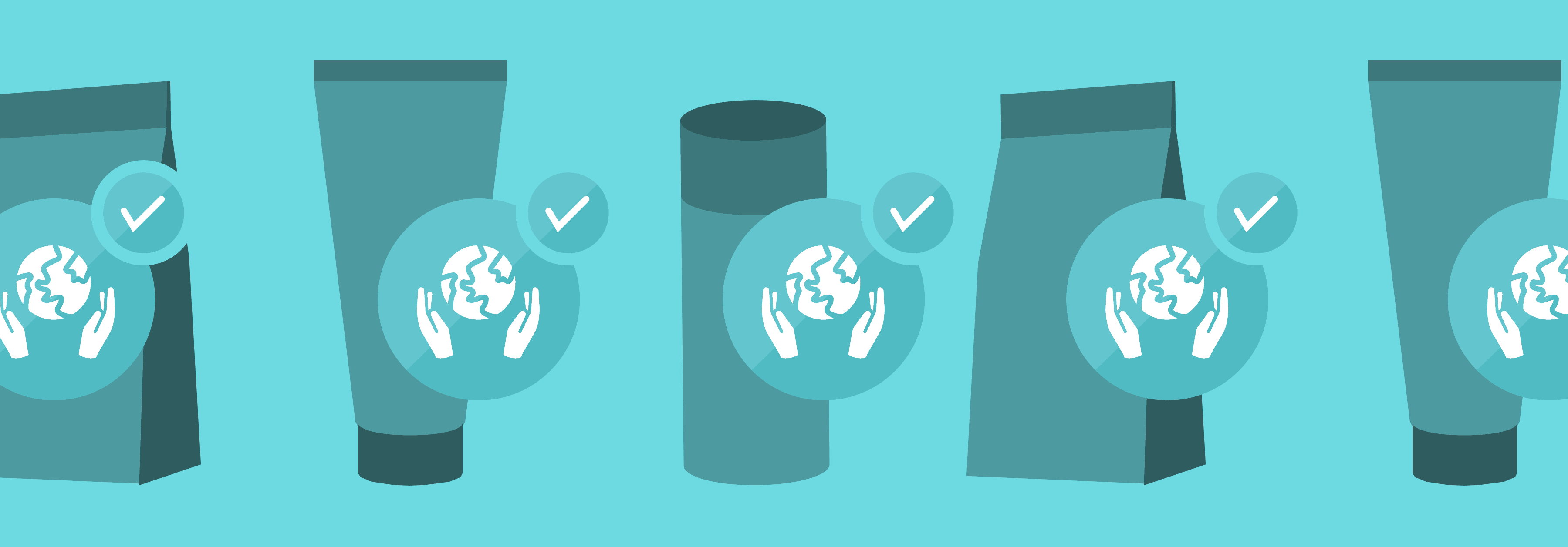
Unsustainable packaging is detrimental to the environment as it increases the amount of waste that is diverted to landfills, causing increased greenhouse gas emissions.
Sustainable packaging can reduce our ecological footprint at all stages of the product life-cycle, helping the manufacturer and the customer work towards a sustainable future.
With sustainability being the major agenda for almost all countries around the globe, several organizations are introducing sustainable packaging in order to reduce the negative impact on the environment and differentiate themselves from the competition.
However, the industry is not devoid of misconceptions that could cause confusion, making it challenging for organizations to work toward a sustainable future.
Sustainable Packaging Is An Added Cost
It is a common belief that a majority of product improvements come with a high price tag. Though the cost of sustainable packaging may seem to be high initially, it offers numerous benefits that contribute to the long-term success of a business. Moreover, socially responsible businesses incorporate the extra cost of sustainable packaging as a part of their business plan, assuring them of profits in the long term.
Adopting sustainable or green packaging enables marketers to connect with their eco-conscious and green-aware consumers, giving them a competitive advantage and boosting profits. In fact, studies conducted by the Carbon Disclosure Project (CDP) prove that organizations that adopt eco-friendly materials and processes are likely to see a return on investment of 18 percent or more.
Apart from attracting new customers and boosting your corporate image as an environmentally-responsible organization, sustainable packaging also offers innovative designs that can be tailored to the clients’ specific requirements.
For instance, waste can be recycled using the paper molding process and converted into customized packaging in order to meet the firm’s requirements for heavy and delicate products at an extremely affordable rate. All this eliminates excessive packaging, making the shipments light and drastically reducing the products’ footprints on the store shelves.
Additionally, in recent times, brands cannot afford to ignore eco-friendly strategies. Consumers increasingly prefer products that protect the environment, reduce global warming, and prevent air and water pollution.
Consequently, both emerging and advanced markets are drifting towards ethical and environment-friendly options, pushing designers, marketers, and package development experts to meet the right social and environmental standards.
Most countries also offer special subsidies and incentives for businesses that are looking to join the sustainability bandwagon. Moreover, firms going the sustainable way also enjoy preferential terms and tax rebates from the state and local authorities for setting up an environment-friendly business.
Thus, green packaging actually stands to save money by reducing material and shipping costs and minimizing waste, playing a persuasive role in helping customers choose your brand over the competition.
Sustainable Packaging Choices are Limited
With the growing concern regarding waste being diverted to landfills and the ensuing greenhouse emissions, customers are expecting firms to use eco-friendly elements in their products.
Consequently, packaging firms have come up with several innovative and green materials, namely polylactic acid (PLA), bagasse, recycled paper, and post-consumer polystyrene that can be used to manufacture coffee cups, plates, cutlery, and boxes.
For instance, Evocative, a New York-based biomaterials firm developed a mushroom-based material that can be used as an alternative to plastic packaging. Similarly, Biopac, a UK-based bioplastic developer uses polylactic acid (PLA) from renewable plant sources to manufacture compostable cups and food packaging.
Sustainable Packaging Adds to Waste
Sustainable packaging is not merely about the eco-friendly nature of the final product. Instead, it means that the packaging material is made from biodegradable, reusable, and environmentally-safe matter and uses energy-efficient manufacturing procedures and health-friendly working conditions for the staff involved.
Sustainable packaging helps firms streamline the packaging design, eliminating unnecessary material from the processes and creating less packaging-related waste. Materials such as biodegradable plastics, plant-based plastics, and recycled products are used to develop sustainable packaging, making it possible for manufacturers and consumers to reduce the amount of waste being diverted to landfills and the ocean floor.
For instance, molded fiber products, namely egg trays, fruit-and-vegetable trays, compostable plant holders, and wine shippers are made using biodegradable waste procured from recycling companies and individual households.
Sustainable Packaging is Unappealing to Consumers
Most commonly, when people think of sustainable packaging they envisage a dull brown or cream paper with visible reused fibers. However, technology has made it possible for design firms to come up with innovative packaging that harnesses powerful aesthetics and is environment-friendly at the same time.
Many international brands and powerhouses such as Samsung, Zara, and Puma offer attractive packaging yet use 100 percent eco-friendly material, preserving the planet and its natural resources.
Want to learn more about sustainable packaging myths? Click here to read our in-depth blog post.
Transitioning to Sustainable Packaging
While some companies are already fully onboard the sustainable packaging bandwagon, others are either on route to making the transition or have yet to make a firm decision on the matter.
For the companies already in existence, it’s about altering the course. Once you’ve committed to making the leap, it’s important to determine your ultimate goals. While the Sustainable Packaging Coalition’s criteria favor a circular economy (or closed loop, which relies on renewable energy), it’s by no means the only choice.
Another is to develop packaging with a linear lifecycle. There, packaging ultimately ends up as trash instead of biologically degrading. It can also be considered eco-efficient, depending on other production factors. It also means bigger short-term gains. The closed loop means more risk and long-term investment, but a higher potential payoff through legitimately sustainable packaging.
Here are some tips to help execute a proper sustainability strategy:
- Get buy-in: Empower employees to take charge and get more emotionally invested in the outcome of the change in strategy. Businesses can also get buy-in from the public. Communicate the change in your corporate philosophy. Done right, it can only improve your image as a forward-thinking company.
- Choose the right materials: It goes beyond selecting materials that are recyclable or even materials that are renewable. While renewable feedstocks are one sustainable direction in which to go, there are other things to consider. For example, how their functionality compares to that of traditional materials. “Sustainable” is great, but it means little if the packaging doesn’t do what it needs to.
- It’s also important to be aware of material origins. For example, Mattel once came under fire for using paper linked to the destruction of Indonesian rainforests. That would run counter to any goals of building up corporate goodwill.
- Get to designing: It will be a long process, but thoroughly evaluating each required packaging component will go a long way toward ensuring an overall sustainable design. Simple ones, made from single materials without secondary and tertiary packaging, are easily disassembled and recyclable. That also means minimal glue when possible. Creating packaging that is reusable and multi-functional also wins market points from a sustainability perspective and with consumers.
- Invest in quality control: Quality control processes are critical, especially when rolling out dramatically different packaging that can contribute to product spoilage. Automating quality control and eliminating proofing fatigue, human error, and errors in general, can also contribute to long-term sustainability.
Automation to Sustainability
Automated quality control tools are indispensable assets for businesses striving to enhance their sustainable packaging processes. These tools, driven by cutting-edge technology offer multifaceted advantages that extend far beyond mere error correction.
In the context of sustainable packaging, precision is paramount. This software meticulously scans through all packaging-related content, including labels, product descriptions, usage instructions, and promotional materials, ensuring that they are free from spelling, grammar, and formatting errors. By maintaining a high standard of accuracy, businesses reduce the likelihood of recalls, reprints, and costly product corrections, directly contributing to a more efficient and eco-friendly production process.

By preventing errors, reducing rework, and promoting sustainability, automated proofreading software helps minimize waste in the production process and optimize resource utilization. They aid in curbing the overuse of materials and energy while contributing to the reduction of the carbon footprint associated with packaging.
In the eyes of environmentally-conscious consumers, these efforts resonate as a genuine commitment to sustainability, ultimately enhancing a company’s brand reputation and its competitiveness in the market.
Automated quality control is not just about catching typos; it’s a vital enabler in a business’s journey toward sustainable packaging. The software streamlines operations, reduces costs, encourages green thinking, and helps businesses establish themselves as responsible actors in environmental protection and sustainability.
As sustainable packaging gains increasing importance in today’s eco-conscious world, this technological solution is becoming an indispensable instrument for companies committed to both excellence and environmental consciousness.
A Sustainable Future
The global packaging and protective packaging market was valued at $1.0 trillion in 2021, and is projected to reach $1.5 trillion by 2031, which would result from steady year-over-year growth.
Innovation will logically end up being one driver of that valuation, just as it is currently in the manufactured goods sectors directly reliant on it. That’s simply the nature of a free-market economy in which consumers reward the cutting-edge.
As a result, it’s no longer a matter of going green. It’s arguably not even about going sustainable. It’s about striving to reach sustainability. As the exact definition of “sustainable” is a fast and moving target, it’s more a matter of taking steps towards attaining that goal.
In a period of just three years, the number of firms listed on the S&P 500 that included sustainability issues in their Securities and Exchange Commission filings increased from 5% to 25%. That in and of itself may not be a testament to how successful sustainability can be, but it is of how the times are becoming more eco-friendly.
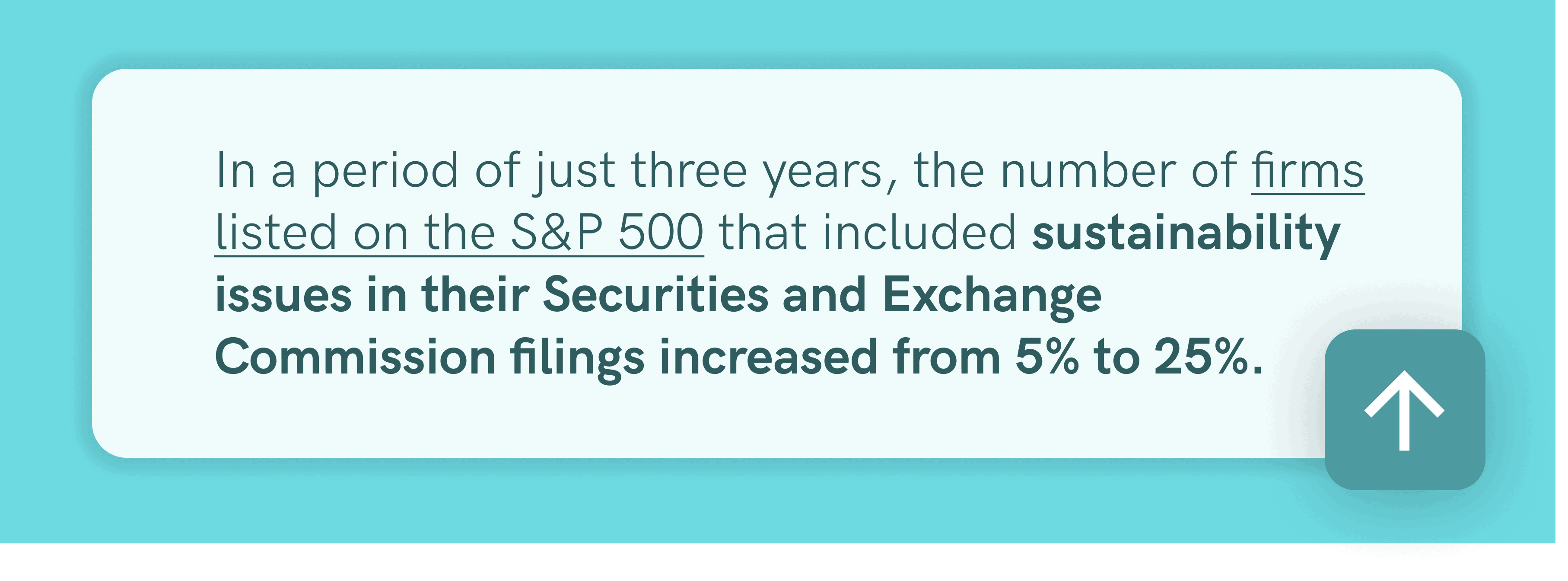
Joining in on the success means changing with the times, or, perhaps more accurately, adapting. Both customers and the companies behind the products they consume stand to benefit from the large-scale evolution of packaging, which is taking place right before our eyes.
If you would like to take a step into implementing sustainable packaging into your business, start by implementing smart, technological solutions that can easily help you get there. Automated quality control is a comprehensive solution that will not only streamline your proofreading and quality assurance processes, it will also help your business achieve true sustainability with far greater ease.
Request a demo of our innovative proofreading software and see how this technology can revolutionize your every day, sustainable business practices.





